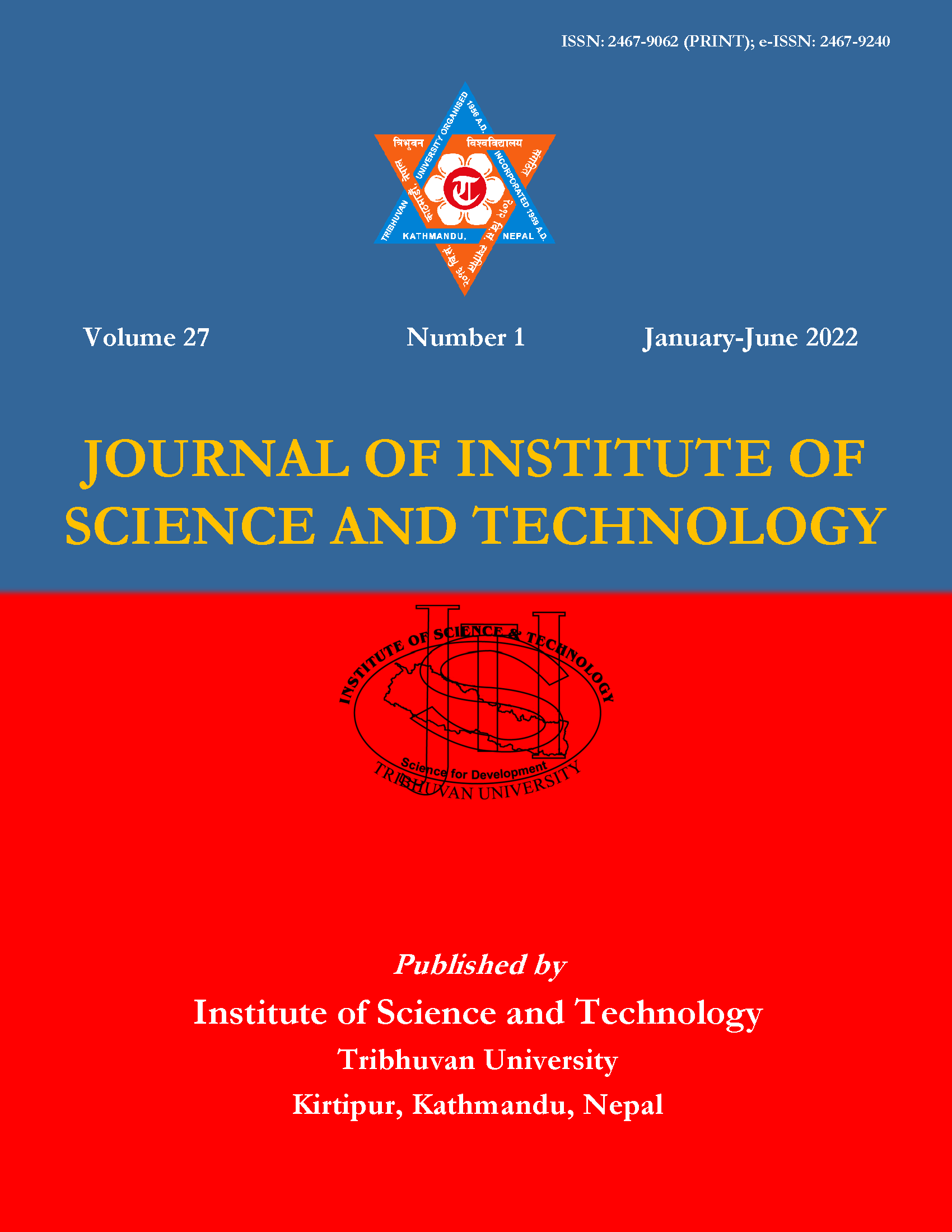An Initial Spatiotemporal Assessment of COVID-19 Clusters in Nepal
DOI:
https://doi.org/10.3126/jist.v27i1.42652Keywords:
Disease clusters, Geospatial dynamics, Pandemic, SARS-CoV-2, SaTScanAbstract
Nepal has been strongly influenced by the COVID-19 pandemic and struggling to contain it with multiple interventions. We assessed the spatiotemporal dynamics of COVID-19 in the context of various restrictions imposed to contain the disease transmission by employing prospective spatiotemporal analysis with SaTScan statistics. We explored active and emerging disease clusters using the prospective space-time scanning with the Discrete Poisson model for two time periods using COVID-19 cases reported to the Ministry of Health and Population (MoHP), Government of Nepal during 23 January – 21 July, and 23 January – 29 November 2020 taking the cutoff date of 21 July (end date of nationwide lockdown). The results revealed that COVID-19 dynamics in the early transmission stage were slower and confined to a few districts. However, since the third week of April, transmission spread rapidly across the districts of Madhesh and Sudurpaschim Provinces. Despite nationwide lockdown, nine statistically significant active and emerging clusters were detected between 23 January and 21 July 2020, whereas seven emerging clusters were observed for an extended period to 29 November. After lifting the nationwide lockdown, COVID-19 clusters developed had a many-fold higher relative risk than during the lockdown period. The most likely cluster was located in the capital city, the Kathmandu valley, making it the highest-risk active cluster since August. Movement restriction appears to be the most effective non-pharmaceutical intervention against the COVID-19 in countries with limited health care facilities. Our findings could be valuable to the health authorities within Nepal and beyond to better allocate resources and improve interventions on the pandemic for containing it efficiently.
Downloads
Downloads
Published
How to Cite
Issue
Section
License
Copyright (c) 2022 Institute of Science and Technology, T.U.

This work is licensed under a Creative Commons Attribution-ShareAlike 4.0 International License.
The views and interpretations in this journal are those of the author(s). They are not attributable to the Institute of Science and Technology, T.U. and do not imply the expression of any opinion concerning the legal status of any country, territory, city, area of its authorities, or concerning the delimitation of its frontiers of boundaries.
The copyright of the articles is held by the Institute of Science and Technology, T.U.




